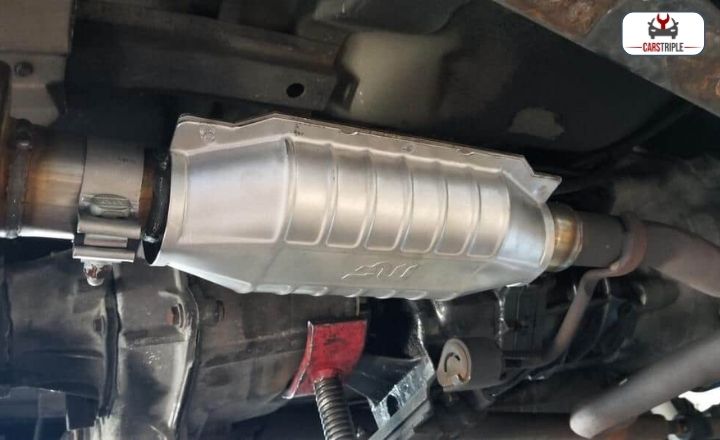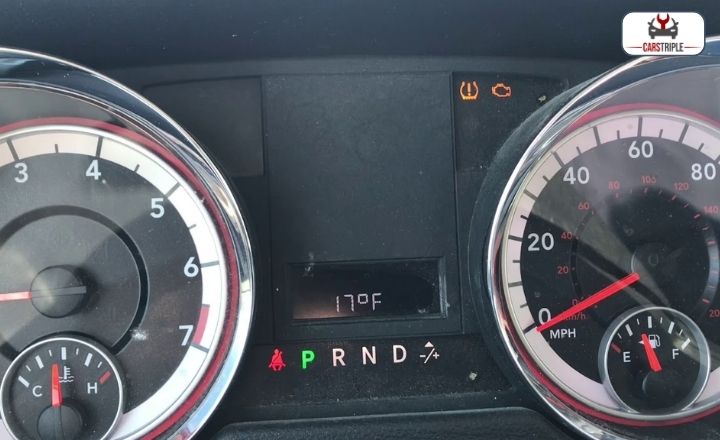The catalytic converter is an essential component of a vehicle’s exhaust system, responsible for reducing harmful emissions and converting them into less harmful substances. There may be situations where the catalytic converter becomes damaged or faulty, leaving car owners wondering if they can still drive without it.
We will explore Can You Drive Without A Catalytic Converter, the potential consequences of doing so, and alternative solutions to consider. So, if you’ve ever wondered about the necessity of this crucial automotive device, read on to find out more.
What Is Catalytic Converter?
A catalytic converter is a device installed in a vehicle’s exhaust system to reduce the harmful emissions produced during the combustion process. It plays a crucial role in reducing air pollution by converting toxic gases into less harmful substances before they are released into the atmosphere.

The main component of a catalytic converter is a catalyst, usually made up of platinum, palladium, and rhodium. These metals facilitate chemical reactions that convert carbon monoxide (CO), nitrogen oxides (NOx), and unburned hydrocarbons (HC) into carbon dioxide (CO2), nitrogen (N2), and water vapour (H2O). This conversion occurs through a series of redox reactions where the catalyst promotes both oxidation and reduction reactions.
Catalytic converters have been instrumental in improving air quality and reducing vehicle pollution levels. They are required by law in most countries to ensure that vehicles meet emission standards and contribute to a cleaner environment.
Is It OK to Drive Without A Catalytic Converter?
It is technically possible to drive without a catalytic converter, but it is not recommended. The catalytic converter is crucial in reducing harmful emissions from your vehicle’s exhaust system. Your car will release higher levels of pollutants into the environment without this. Contributing to air pollution and potentially violating emission laws.

Driving without a catalytic converter can negatively impact your vehicle’s performance and fuel efficiency. The catalytic converter helps improve engine performance by ensuring the proper mixture of air and fuel for combustion. You may experience decreased power, reduced fuel economy, and potential damage to other components of your vehicle’s exhaust system without this.
It might be tempting to remove or bypass the catalytic converter for various reasons, such as cost savings or increased horsepower. Doing so is not advisable. It is always best to comply with emission regulations and keep your vehicle’s exhaust system intact for the sake of the environment and your car’s overall performance.
What Happens If You Remove The Catalytic Converter?
Some car enthusiasts may be tempted to remove it for better performance or louder engine sounds. But what exactly happens if you decide to take this route? Well, removing the catalytic converter can have several consequences.
Check Engine Light And Engine Error Codes:
Your check engine light will likely come on because the oxygen sensors in your exhaust system are designed to detect issues with the catalytic converter and trigger error codes. Without the catalytic converter, these sensors will no longer detect proper emissions control, resulting in a check engine light.

Removing the catalytic converter can increase harmful emissions being released into the environment. The catalytic converter plays a crucial role in reducing pollutants in exhaust gases, such as carbon monoxide and nitrogen oxides. These pollutants will be released directly into the atmosphere, contributing to air pollution and potentially violating environmental regulations.
Changes To The Exhaust Sound:
One significant change you’ll notice is a difference in the exhaust sound. Whether you replace it with a straight pipe or leave it completely open, the absence of a catalytic converter will result in noticeably louder exhaust noise. A catalytic converter aims to reduce harmful emissions by converting toxic gases into less harmful ones. This process also acts as a muffler, reducing the noise produced by the engine. Removing this component allows unrestricted flow, resulting in a louder and more aggressive exhaust note.
Changes To The Fuel Economy And Engine Performance:
The fuel economy may decrease as the catalytic converter plays a crucial role in reducing emissions and improving efficiency. The engine may not burn fuel as efficiently, leading to decreased mileage without it. Removing the catalytic converter can affect engine performance. The converter helps control exhaust gas flow and reduces back pressure on the engine. Without it, there may be increased back pressure, reducing power output and acceleration.
Final Words Of Can You Drive Without A Catalytic Converter
In the above article about Can You Drive Without A Catalytic Converter, removing the catalytic converter from a vehicle can significantly impact fuel economy and engine performance. Some may be tempted to remove this component to increase power or save money, but it is important to consider the negative consequences that come with it. Without the catalytic converter, emissions of harmful pollutants will increase, contributing to air pollution and environmental degradation.
The absence of this device can result in reduced fuel efficiency and potential damage to the engine over time. It is crucial to prioritize responsible vehicle maintenance and adhere to regulations regarding emissions control. Let us all play our part in preserving our environment by keeping our vehicles properly equipped with functioning catalytic converters.
FAQ’s:
How Long Can I Go Without Replacing A Catalytic Converter?
The lifespan of a catalytic converter can vary depending on several factors, such as the quality of the converter, driving conditions, and maintenance. On average, a catalytic converter can last anywhere from 70,000 to 100,000 miles.
Can I Replace My Catalytic Converter With A Straight Pipe?
No, you cannot replace your catalytic converter with a straight pipe. It contains catalysts that convert toxic gases into less harmful substances before releasing them into the atmosphere. By removing the catalytic converter and replacing it with a straight pipe, you would be bypassing this important emission control device, resulting in increased pollution and potential legal consequences.
Can I Drive Without A Catalytic Converter?
Yes, but driving without a catalytic converter is not recommended. Without it, your car will emit higher levels of pollutants into the environment, contributing to air pollution and harming public health. Operating a vehicle without a functioning catalytic converter is illegal in many countries and states.
You may also find it helpful:
